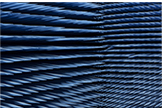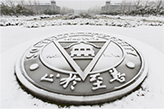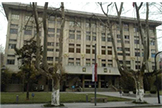
Recently, the research work of an information science view of metamaterials, conducted by a research group which was led by Professor Tie Jun, Cui from the National Key Laboratory of Millimeter Waves of the School of Information Science and Technology, SEU, was selected by Optics and Photonics News -- the membership magazine of the Optic Society -- as one of the thirty most important work in optics, 2016. The article, titled “An Information Science View of Metamaterials”, reported three high-quality papers of the research group published in Light: Science and Application. Every year, Optics and Photonics News selects thirty of the most notable work in optics and photonic science.
In 2014, the research group proposed a new type of artificial electromagnetic coding metamaterials that denotes, analyzes and designs metamaterials in a digital way. Compared to traditional simulated metamaterials on the basis of effective medium parameters, coding metamaterials greatly simplifies the design process and reduces difficulties because their functionality can be controlled by their coding sequence. Thanks to the digital feature, the research group creatively applied the discrete convolution theorem to the far-field pattern. It means that by overlaying another gradient coding sequence to the existing coding pattern, the far-field radiation pattern can be arbitrarily deflected towards a designed direction. This operation of rotating the far-field pattern to a larger angle is similar to the process of of moving the baseband signal to the high-frequency carrier in Fourier transform. At the same time, the group first proposed the use of information entropy to analyze and estimate the size of the information contained in the coding metamaterials, and revealed the proportional relationship between the geometric entropy of the coding pattern and the physical entropy of the far-field pattern, pointing out that this new discovery might help advance the application of coding metamaterials in areas such as multi-beam wireless communications, radar detection and compressive sensing imaging. Finally, the group also proposed a new anisotropic coding surface, which can exhibit independent coding patterns under the x- and y-polarized electromagnetic waves, thus showing different regulatory values for these electromagnetic waves. This technology is expected to enhance the transmission rate of wireless communications and the density of the current storage media and to achieve the visual three-dimensional hologram.
Southeast University, as the first unit of completion and corresponding author (the main researchers: Cui Tiejun, Lin Shuo, Gao Lihua, Cheng Qiang, etc.), conducted the research and achieved the research results. It also cooperated with the Center for Terahertz Waves of Tianjin University for experimental tests. Relevant work has been funded by the National Natural Science Foundation of China, the National Major Equipment Funding Project, as well as the Program of Introducing Talents of Discipline to Universities.
















